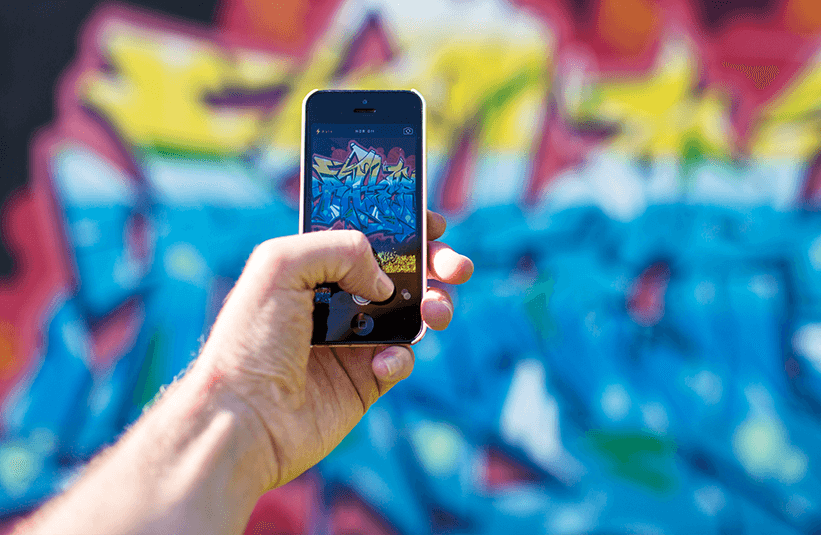“Yotpo is a fundamental part of our recommended tech stack.”
 Laura Doonin, Commercial Director
Laura Doonin, Commercial Director
 Zendesk + Yotpo eBook
Zendesk + Yotpo eBook
Together, Zendesk and Yotpo help eCommerce sites improve customer experience by integrating user-generated content (UGC) and proactive support to lift consumer satisfaction and trust, in turn boosting sales and retention.

Online shoppers have the luxury of limitless options at their fingertips. They can buy pretty much any product, at almost any price, anywhere they want on the web. While great for consumers, this massive selection comes at a cost for brands: Reduced customer loyalty. Brands must fight for the attention—and wallets—of consumers who have a million other options.
So, how do retail brands win over the hearts of consumers who are spoiled by so many choices?
It all starts with a superior customer experience, from product discovery to post-purchase support. The most innovative brands see their customers as co-creators throughout the entire customer journey.
Why? Consumers trust the opinions and recommendations of other consumers—much more than official brand messaging. According to BrightLocal’s 2016 Consumer Review Survey, 84% of consumers say they trust online reviews as much as personal recommendations.
There’s no doubt that user-generated content (UGC) is valuable and influential. But often, the data available to us is self-reported, making it less reliable than cold, hard facts.
Yotpo’s data team analyzed 200,000 brands from six different industries—including fashion, health & beauty, sports, home & garden, and more. The research looked at how on-site customer content (like reviews and photos) impacts conversion rate in general and for specific industries
Check out the full report to get data from your industry.
According to the data, 32% of website visitors interact with UGC, and 55% of converted customers interact with UGC. That means that visitors are actively looking for UGC, and the majority of those who purchase online saw UGC at some point during their journey.
The average conversion rate of eCommerce shoppers is 2.1%. But the conversion rate of consumers who interact with UGC on-site is much higher: 5.6%. That’s an uplift of 166%. This proves that customer reviews, photos, videos, Q&As, and other UGC have a central role in establishing trust. More significantly, they have a real impact on conversion rates.

In addition to UGC, retailers are leveraging proactive support as a tool for creating an excellent customer experience. Proactive support is the tactic of identifying and resolving customer issues before they become problems.
Proactive customer support can be implemented in multiple stages of the purchase journey, from a store associate asking a shopper if they can help find an item, to a live chat window popping up on-site, or a post-purchase survey to a customer who has just bought an item in your brand’s mobile app.
This ebook will delve into how brands can use UGC and proactive support to create exceptional customer experiences and, in the process, gain loyal customers and brand advocates.
Proactive support makes brands accessible and builds lasting customer relationships. It empowers companies to engage with customers on their preferred channels, such as email, text messaging, and social media.
Today’s on-demand consumers expect proactive customer support.
According to a recent study by Zendesk on social customer support, 51% of consumers expect a response on social media within 1 hour. Even though they expect a speedy reply, on average, they typically wait up to 10 hours before one.
A recent study from Zendesk found that while raising customer satisfaction scores was the #1 goal for companies, the majority of respondents were frustrated with an inconsistent customer experience across communication channels.

Proactive support gives retailers the opportunity to wow customers and leave them with a positive lasting impression. Ending on a high note increases the chances of a repeat visit and, in turn, cultivates a long-term customer relationship.
Loyal customers equal increased revenue.
A recent Yotpo study found that returning customers not only spend three times more than one-time shoppers, but they’re also responsible for ⅓ of money spent on online shopping.

With a better idea of what proactive support is and its potential, it’s time to get started.
Here are 3 simple steps for building a strong proactive support strategy:
1. Set clear benchmarks
Speed matters. Try to resolve issues quickly—or at least set the expectation that you will try to. This can be tough without triggers or other automated responses, but pre-written messaging, catered to each social channel, that lets the customer know you’ve seen their comment and that you’re working on a resolution will buy you some time. Only try to resolve simple issues and questions posed over social media, especially if the answer is public. Otherwise, provide a first response over social media that moves the conversation to a more private channel.
2. Get customer feedback often
Ask your customers for feedback on everything from products to pricing. Use multiple tools, such as live chat, surveys, and automated feedback loops to proactively seek out the opinions of current and prospective customers.
Learn more about customer feedback: Conduct an honesty audit.
3. Invest in a self-serve knowledge base
Invest in self-serve content and customer reviews to actively address product-related questions. Give customers the most relevant answers and information automatically—and in context—for a faster self-service experience.
“Investing in our knowledge base meant we saw a massive decline in the number of support requests coming in,” said Mike Cartwright, Chief of Partner Solutions at Expedia Affiliate Network. “Partners were getting what I consider to be the very best service—which is that they never had to log a ticket in the first place.”
Learn more about how to build a knowledge base.

Everlane is an online apparel retailer that has won many customers and brand loyalists due to its policy of being “radically transparent.” For example, Everlane has taken the extreme step of disclosing the true costs of its apparel as well as the company’s markups. In addition, customers are encouraged to learn about the factories where Everlane products are made.
Everlane’s penchant for trailblazing was further exemplified when it became one of the first companies to be a Facebook Messenger Beta launch partner. The retailer adopted Facebook Messenger as a customer support channel, powered by Zendesk Chat on the back end. Everlane was looking to expand its support offerings to include live chat (it already offered support via email), and wanted to ensure that the same philosophy that drives its product offerings—quality over quantity—informed its support strategy.
“Different customers have different preferences, and it’s about finding the way to interact with your customers where they want to interact,” said Shane Roach, who headed Everlane’s customer experience operations team at the time of the Facebook Messenger partnership. “Working in customer experience, we want to launch something new and be the best at it, but we also want our customers to be able to interact with us across every channel and to be the best at everything. It’s about setting and meeting expectations. If there are other alternatives and other channels where we can continue to learn about our customers, we can try and meet them effectively there, too.”

To date, Everlane has delivered more than 10,000 chats via Facebook Messenger and handles roughly 750 customer service sessions a week. It has found that customers are more likely to engage with the brand through Facebook Messenger than email. Everlane’s customer experience operations team has seen its email ticket volume decrease even as the company’s customer base continues to grow. The reason, Roach explained, is because Facebook Messenger is easy and convenient.
Facebook Messenger is easy for Everlane’s customer service agents, too, who report being able to handle up to three or more simultaneously. They also note that Facebook Messenger is a forum which offers them the opportunity to be more conversational with customers, much like live chat.
As noted before, the true power of UGC is that it generates a level of trust in consumers that brands aren’t able to match through their own content marketing efforts. Retailer trust is one of, if not the most important, factors in consumer purchase decisions.
According to a Yotpo survey of 1,000 shoppers, 92% said they would trust a recommendation from family or friends over branded messaging, and 77% said that authentic customer photos influence their purchasing decisions more than professional ones.

Retailers must put a strategy in place to collect and use customer ratings and reviews, as well as other engaging content, such as photos and videos showcasing the use of their products.
Here are just a few examples of ways to cultivate UGC:
1. Generate reviews from post-purchase requests
77.3% of respondents to a Yotpo survey stated that reviews impacted their decision to make a purchase. Reviews boost shopper confidence in making a purchase by showing them how a product fared in the wild, with real customers.
The most straightforward way to get reviews is to ask your patrons directly. As with all customer interactions, it’s best to strike while the iron is hot. The peak time to ask for reviews is shortly after a customer has received a product they ordered, in the form of a post-purchase e-mail.
The ideal review form is in the body of an e-mail that customers can fill out quickly and easily without any unnecessary extra clicks. These e-mails are also a great opportunity to present customers with similar products that could complement their purchase.
There are certain send times and specific language to use to maximize review yield, depending on your industry. For example, including your store name in the subject line increases participation in all industries except for food beverage and tobacco, and asking a question in your subject increases the response rate in all industries except health and beauty. Exclamation points help response rates for food and tobacco stores, but really hurts them when it comes to electronics. It all depends on your sector, so check out this extensive Yotpo study for the best strategy for you.
2. Incentivize users to submit UGC by hosting social media contests or campaigns
Social media contests and campaigns inspire fresh, quality UGC from your fans, while simultaneously getting the word out about your products via word of mouth. There are two things you need to host an effective social media UGC campaign: a challenge and a hashtag.
Seasonal events and holidays are a great time to do this. MeUndies ran a campaign for LGBTQ pride month in which they asked fans to post photos in their favorite MeUndies intimates with the tags #Pride and #MeUndies. At the same time, they released new rainbow pride-themed undies, and donated $1 to the Los Angeles LGBT center for every purchase of the design. The campaign not only positioned MeUndies as a brand that cares about social issues and giving back to the community, it also inspired hundreds of new UGC posts that connect MeUndies with the emotional, positive energy of Pride.
Another great example is Ben and Jerry’s, who challenged their fans to take a selfie of the blissful moment of eating Ben & Jerry’s and share it on Instagram with the hashtag #CaptureEuphoria. Thousands of fans shared their pictures with their loved ones on social media, spreading the Ben and Jerry’s brand across social networks and connecting their products with “euphoria.”

3. Create a community that continuously brings engagement and content
Everyone wants their five minutes of fame. For many fans, just being recognized by their favorite brand is incentive enough to create and share UGC. Creating a fan community by dedicating an area of your site to featuring customer content motivates even more customers to join in and submit UGC for their chance at the internet limelight.
For example, Modcloth has a section of their website called the Style Gallery where they feature their favorite user-submitted photos of Modcloth outfits, along with links to where shoppers can purchase the items in the pictures. Another example is Burberry’s “The Art of the Trench” section of their website that features customer photos of their famous trench coats. This UGC sub-site received 7.5 million page views per month in its first year, and reached 13 million two years later. These photos also include links to the particular coat for purchase, and Burberry reported that conversion rates of coats featured in the UGC were notably higher than their average.
A UGC community creates added engagement by enabling fans to comment on and upvote each other’s entries, or ask questions and receive answers from fellow shoppers. The community builds on itself, and will encourage and inspire UGC in a growing, cyclical fashion.
The key to increasing your volume of UGC is making the process as simple as possible for customers—across all channels and devices. Customers frequently need to be prompted for their feedback, often with an incentive, and are far more likely to comply if the process is quick and easy. Consider the collection of UGC to be another extension of the purchase process.
The bottom line is that user-generated content earns trust and in many cases increases your site conversion rate. When you incorporate UGC into your proactive customer support strategy, you turn happy customers into powerful brand advocates.

Zendesk builds software for better customer relationships.
It empowers organizations to improve customer engagement and better understand their customers. More than 101,000 paid customer accounts in over 160 countries and territories use Zendesk products.
Based in San Francisco, Zendesk has operations in the United States, Europe, Asia, Australia, and South America.

Yotpo helps brands collect and leverage reviews and photos throughout the buyer journey to increase trust, social proof, and sales.
1. Ask intelligently
2. Social proof speaks for itself
3. Brand & product discovery
Check out these links:
YOTPO.COM YOTPO BLOG
Your information will be treated in accordance with our Privacy Policy
This will take just a moment…We're finding the right person on our team to help your brand!
“Yotpo is a fundamental part of our recommended tech stack.”
 Laura Doonin, Commercial Director
Laura Doonin, Commercial Director








